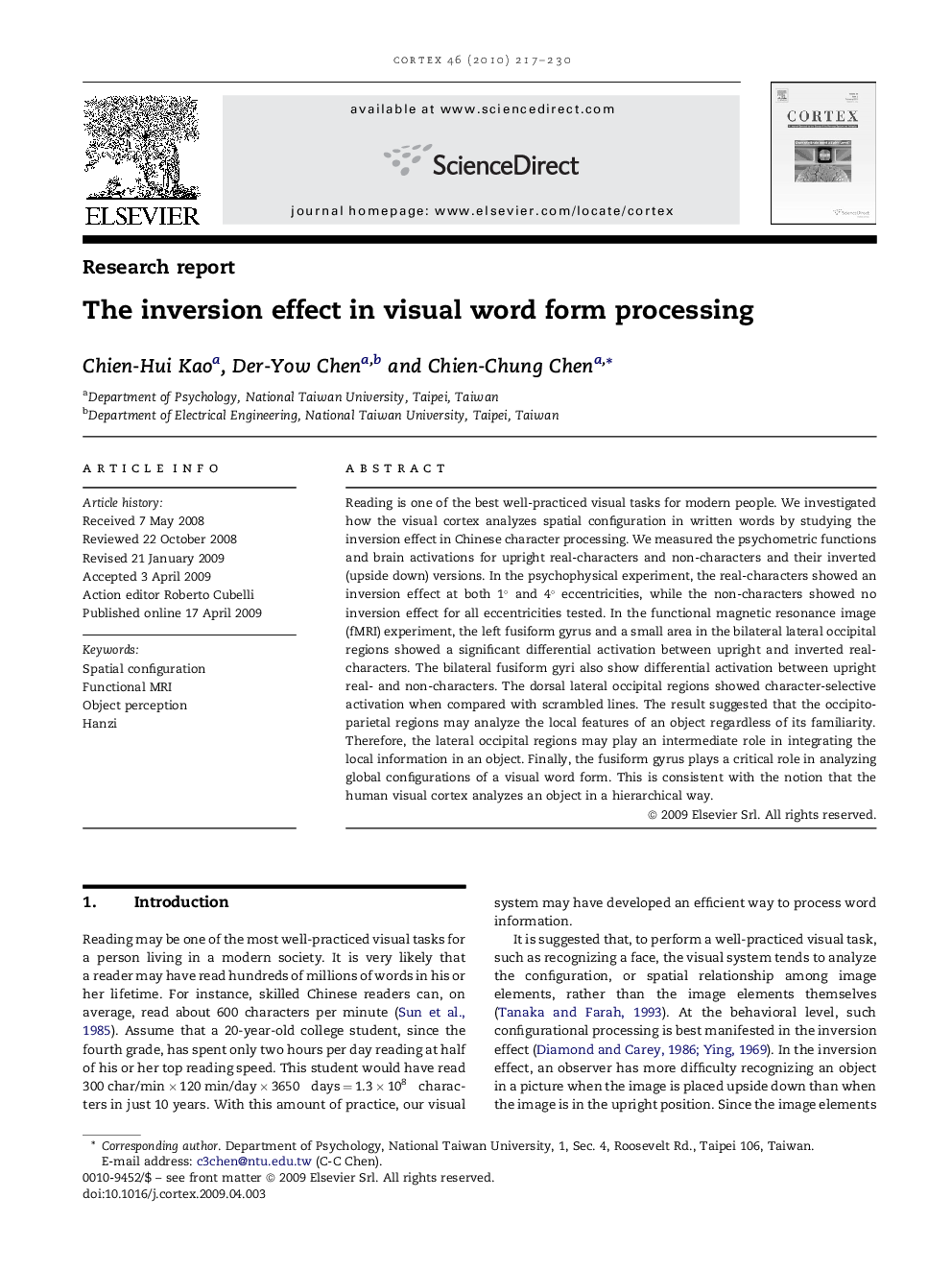| Article ID | Journal | Published Year | Pages | File Type |
|---|---|---|---|---|
| 942601 | Cortex | 2010 | 14 Pages |
Reading is one of the best well-practiced visual tasks for modern people. We investigated how the visual cortex analyzes spatial configuration in written words by studying the inversion effect in Chinese character processing. We measured the psychometric functions and brain activations for upright real-characters and non-characters and their inverted (upside down) versions. In the psychophysical experiment, the real-characters showed an inversion effect at both 1° and 4° eccentricities, while the non-characters showed no inversion effect for all eccentricities tested. In the functional magnetic resonance image (fMRI) experiment, the left fusiform gyrus and a small area in the bilateral lateral occipital regions showed a significant differential activation between upright and inverted real-characters. The bilateral fusiform gyri also show differential activation between upright real- and non-characters. The dorsal lateral occipital regions showed character-selective activation when compared with scrambled lines. The result suggested that the occipitoparietal regions may analyze the local features of an object regardless of its familiarity. Therefore, the lateral occipital regions may play an intermediate role in integrating the local information in an object. Finally, the fusiform gyrus plays a critical role in analyzing global configurations of a visual word form. This is consistent with the notion that the human visual cortex analyzes an object in a hierarchical way.
